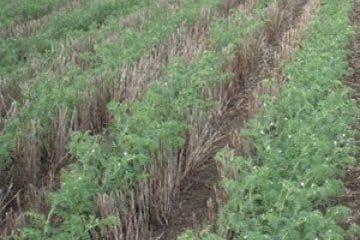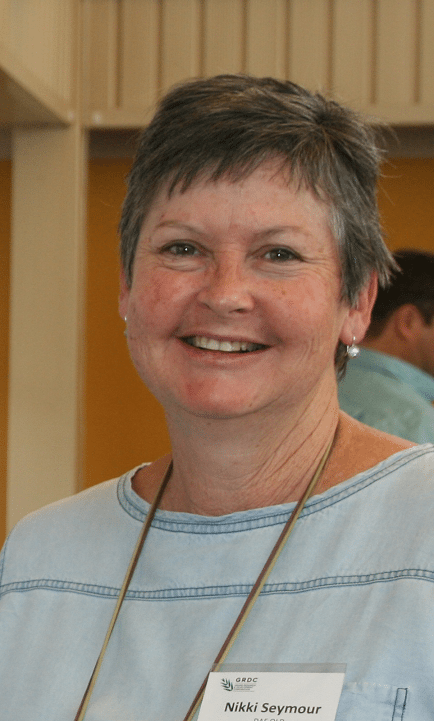ENVIRONMENT and agronomic management are critical considerations for growers looking to impact the capacity of pulse crops to fix soil nitrogen (N) and deliver a valuable boost to their farming system productivity.

Queensland Department of Agriculture and Fisheries (DAF) principal soil microbiologist Nikki Seymour says changes in row spacing, time of sowing and variety have significant implications for the amount of nitrogen fixed by individual crops.
The benefits of well-managed pulse crops are well documented – grown under ideal conditions they can add 30 to 120 kilograms of N per hectare per year back into the soil for use by subsequent crops, while wheat crops grown in rotation with chickpeas can show a gross margin 50–90 per cent higher compared to a wheat-on-wheat rotation.
The amount of N fixed and used by pulse crops to grow varies widely from zero to 400 kilograms of N per hectare and is influenced by crop species, soil nitrate at planting, effective nodulation and agronomic factors such as time of sowing, row spacing, plant population and variety.
Improving the amount of N fixed within northern farming systems by altering agronomic practices has been the focus of a recent Grains Research and Development Corporation (GRDC) investment and results from the field trials.
Queensland Department of Agriculture and Fisheries (DAF) senior soil microbiologist Nikki Seymour said changes in row spacing, time of sowing and variety had significant implications for the amount of N fixed by individual crops.
“Good agronomic management means better N nutrition for the pulse crop and also potentially for the crop following that pulse,” Dr Seymour said.
“Maximising N fixation is dependent on firstly inoculating the legume seed with the appropriate rhizobia strain to ensure nodulation is adequate, then optimising basic agronomy to maximise legume productivity.
“However, it’s important to remember that the amount of N fixed by a legume does not equal the amount available for the next crop.
“Nitrogen is removed in the harvested grain and the N remaining in the crop residue then needs to be mineralised by microbial activity before it’s available to the next crop.”
Field trials of chickpea, mungbean, soybean and faba bean planted at sites near Goondiwindi and Dalby to compare row spacing, time of sowing and varietal influence on amount of N fixed have produced some clear results that can assist growers with crop planning and management.
“Narrower row spacing in pulses, such as 25cm and 50cm rather than 75cm or 100cm, not only improves crop biomass and yield but also the proportion of N in that biomass that is fixed from the atmosphere and hence free for crop use,” Dr Seymour said.
“This allows crops to be produced on lower levels of soil nitrate which improves N fixation capacity, and gives more opportunity for crop residues to be higher in N that can mineralise for the following crop.
“Time of sowing should be optimised for maximum biomass production and a longer time to accumulate fixed N.
“The proportion of N in plants that is derived from the atmosphere (%Ndfa) i.e. fixed, is significantly greater when crops are sown earlier in the planting window rather than late, particularly in soybean and faba bean crops.
“If growers are planting late, more N will be fixed if plant populations are significantly increased.”
While varietal differences in N fixing potential are only minor, Dr Seymour said growers could aim to plant higher biomass varieties to improve N fixation.
Source: GRDC
A copy of Dr Seymour’s paper can be downloaded from the `Resources and Publications’ section of the GRDC website or here.
Grain Central: Get our free daily cropping news straight to your inbox – Click here


HAVE YOUR SAY